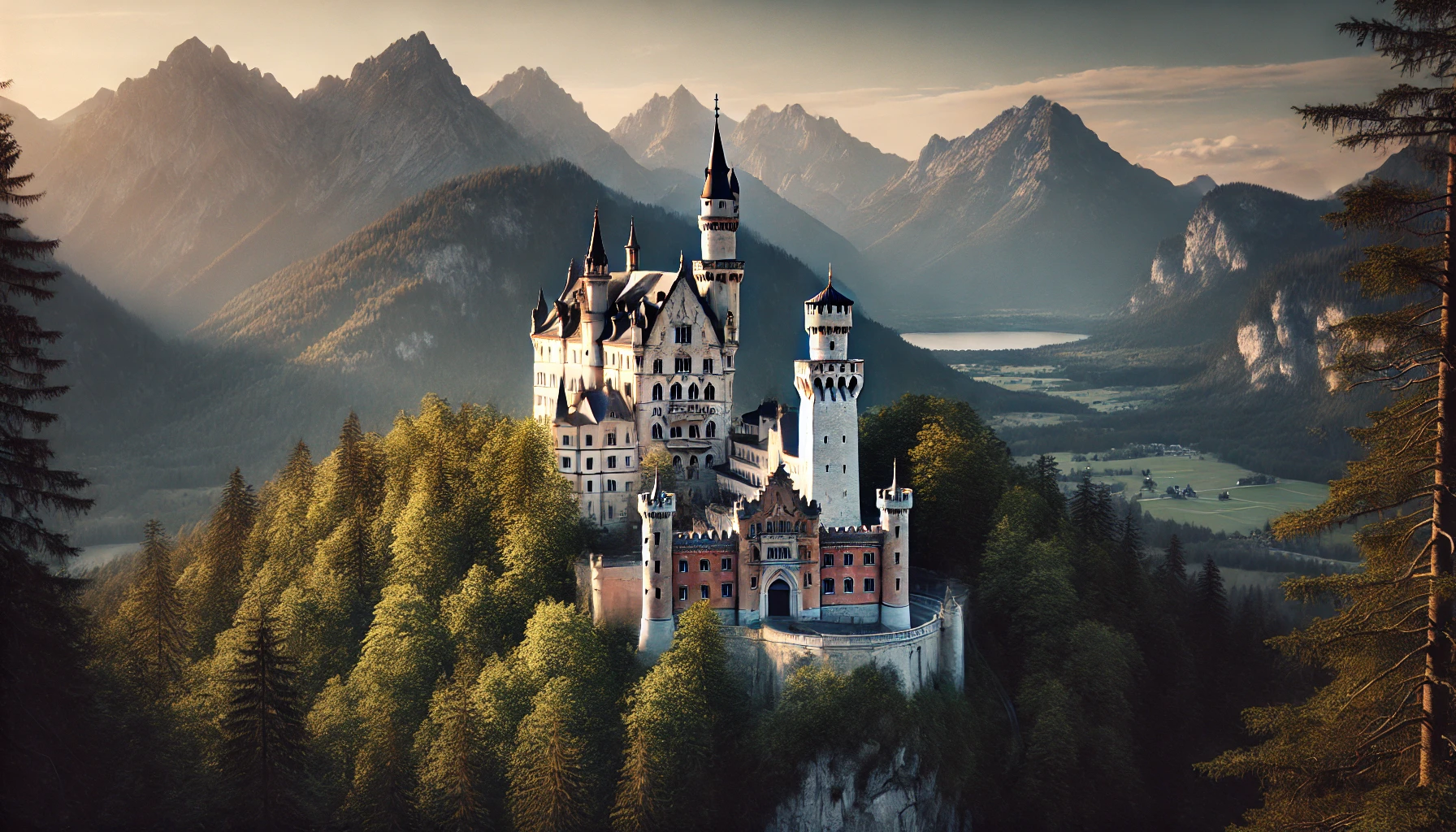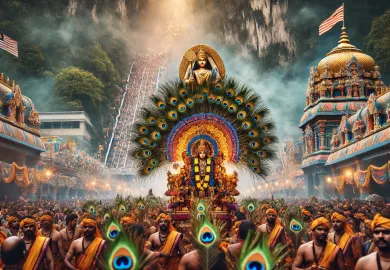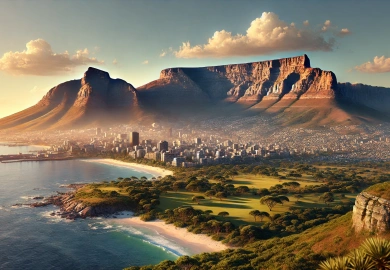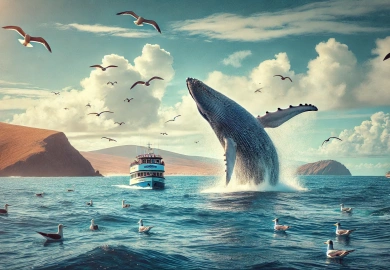
Nestled in the Bavarian Alps, Schloss Schwanstein stands as a beacon of German romanticism, drawing visitors with its fairytale-like architecture and rich history. While many people mistakenly associate the castle with the more famous Neuschwanstein Castle, Schloss Schwanstein has its own fascinating story. From royal roots to its role in shaping Bavarian history, this historic gem offers much more than meets the eye. Let’s embark on a journey through time to uncover the origins and significance of Schloss Schwanstein.
The Origins of Schloss Schwanstein: A Royal Dream
The story of Schloss Schwanstein begins in the 19th century with King Maximilian II of Bavaria, who sought a retreat that would reflect the beauty of the surrounding Alps. Maximilian II, known for his deep appreciation of art and nature, chose the Hohenschwangau area to build his dream castle. The location, already rich in medieval history, provided the perfect setting for a royal residence.
King Maximilian II’s vision for Schloss Schwanstein was heavily influenced by the romanticism that swept across Europe in the early 1800s. He envisioned a castle that combined elements of medieval knighthood and the rugged beauty of the Alps. Construction of Schloss Schwanstein began in the 1830s on the ruins of a medieval fortress, ensuring that the castle’s foundation remained deeply rooted in Bavaria’s past.
The design of the castle blended neo-Gothic and romantic architectural elements, creating a unique structure that mirrored the fairytale castles depicted in literature. While the castle was initially a retreat for the Bavarian royals, it soon became a symbol of Bavarian nationalism and pride.
Schloss Schwanstein and Its Connection to Neuschwanstein Castle
One cannot discuss the history of Schloss Schwanstein without mentioning its famous neighbor, Neuschwanstein Castle, built by King Ludwig II. Ludwig, the son of Maximilian II, grew up in Schloss Hohenschwangau, the earlier castle on the same grounds. His upbringing in such an enchanting location greatly influenced his later works, including his famous Neuschwanstein Castle.
While Neuschwanstein is often regarded as Ludwig’s magnum opus, it was Schloss Schwanstein that first ignited his imagination. As a child, Ludwig spent countless hours wandering the halls of Schloss Hohenschwangau, absorbing its medieval atmosphere and dreaming of even grander structures. His father’s vision for Schloss Schwanstein planted the seeds for what would later become Neuschwanstein, one of the most iconic castles in the world.
Despite the prominence of Neuschwanstein, Schloss Schwanstein retains its unique identity. It stands as a reminder of King Maximilian II’s vision and serves as a bridge between the medieval past and Ludwig’s romantic future.
The Role of Schloss Schwanstein in Bavarian Culture
Beyond its architectural beauty, Schloss Schwanstein holds an important place in Bavarian history and culture. The castle has been a focal point for Bavarian nationalism, serving as a symbol of the region’s independence and unique identity. King Maximilian II’s desire to create a castle that reflected both Bavaria’s medieval heritage and its natural landscape resonated deeply with the Bavarian people.
During the 19th century, Bavaria was a kingdom within the German Confederation, and the Bavarian monarchy played a crucial role in shaping the region’s political and cultural identity. Schloss Schwanstein was more than just a royal residence; it was a statement of Bavarian pride. The castle’s strategic location in the Alps, overlooking the vast and scenic countryside, symbolized the strength and endurance of Bavaria.
Schloss Schwanstein also became a hub for the arts, with King Maximilian II inviting poets, painters, and musicians to visit the castle. This patronage of the arts helped to foster a Bavarian renaissance, where the region’s cultural traditions were celebrated and preserved. To this day, Schloss Schwanstein remains a cultural treasure, attracting visitors from all over the world who come to admire its beauty and learn about its role in Bavarian history.
Visiting Schloss Schwanstein: A Journey Through Time
A visit to Schloss Schwanstein is like stepping into a living history book. The castle’s majestic towers, sprawling courtyards, and ornate interiors are a testament to the craftsmanship and artistic vision of the 19th-century Bavarian monarchy. Every room in Schloss Schwanstein tells a story, from the intricately designed throne room to the intimate royal chambers.
One of the highlights of any visit is the castle’s chapel, which houses stunning stained-glass windows and religious relics from the Middle Ages. The chapel serves as a reminder of the castle’s deep connection to both Bavarian royalty and the region’s medieval history.
The surrounding area of Hohenschwangau is equally captivating, offering breathtaking views of the Alps and the nearby Alpsee Lake. Visitors can take guided tours through the castle’s grand halls or explore the nearby forests and trails that were once frequented by Bavarian kings. For history enthusiasts and architecture lovers alike, Schloss Schwanstein offers an unforgettable experience.
The Legacy of Schloss Schwanstein: More Than Just a Castle
Schloss Schwanstein’s legacy extends far beyond its picturesque appearance. As a symbol of Bavarian pride, romanticism, and artistic achievement, it has inspired countless generations of visitors, artists, and scholars. The castle’s unique blend of medieval history and romantic architecture ensures that it remains a cherished landmark, not only in Bavaria but throughout the world.
Today, Schloss Schwanstein continues to be a popular destination for tourists and history buffs alike. Its role in shaping the cultural and political landscape of Bavaria, combined with its undeniable beauty, has solidified its place as one of the most important historical sites in Germany. Whether you’re visiting for its architectural splendor or to immerse yourself in Bavarian history, Schloss Schwanstein offers a window into a world where romance, art, and history converge.
By exploring the rich history of Schloss Schwanstein, visitors gain a deeper understanding of Bavaria’s royal past and the impact of romanticism on European culture. This magnificent castle, with its roots in medieval heritage and its ties to one of the most iconic royal families, continues to captivate those who venture to its gates. Schloss Schwanstein stands as a reminder that the past is never truly forgotten, and that the beauty of history can be preserved for future generations to appreciate.








